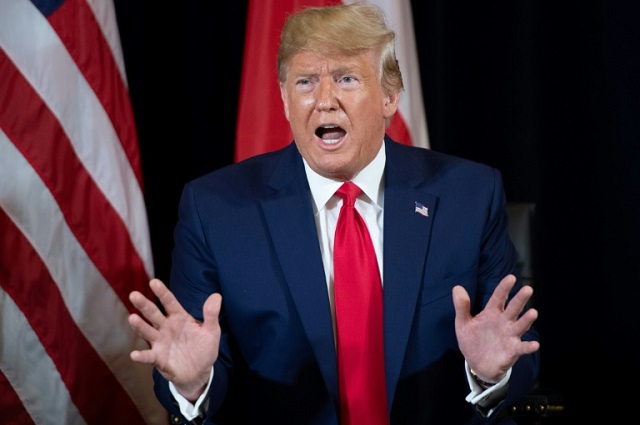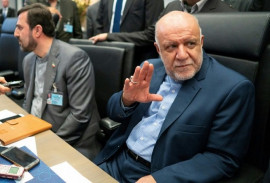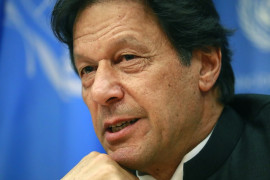
Before dilating upon the wider implications of the attack, a word about the technology and its employment. The attack was an inexpensive mix of armed drones and cruise missiles with diversionary posturing for deception. Recently, Iranian cruise and ballistic missiles (Fateh, Zelzal, the Shahab series, and Ghadr and Sejil) have grown in accuracy and sophistication. This changes the threat matrix, emanating from large, expensive missile systems as drones are affordable weapons, untraceable over the radar and able to swarm potential target(s). This is a new “revolution in warfare”. PW Singer in “The Future War is Here”, published in the International NYT on September 20, 2019, warns, “the lower barrier to entry for the new technology of war [drones plus missiles] demands a higher barrier to entry for joining one”.
Geo-strategically, the cited attack seems to have changed the military paradigm in the region. Sneaking over hundreds of miles through six battalions of the expensive US-supplied Patriot Anti-Missile System, US intelligence, Saudi Air Defence and air surveillance; Iran — in one stroke — has altered the Saudi threat perception by striking two of the numerous economically most vulnerable targets which were not defended robustly.
Pending investigations, the Kingdom has shied away from pointing fingers and only said the attack was not from Yemen. Till the investigations are complete and KSA is sure about the nature and extent of the US response, the Kingdom will downplay the attacks. Saudi Arabia has traditionally avoided a military confrontation with Iran despite provocations. After the 1996 bombing of the Khubar Towers complex, which killed 19 USAF personnel, KSA deliberately sought to shift the blame away from Iran, despite the US confirming Iranian complicity.
In case of the US, after the initial bluster, shaping the environment is more measured. As the attack is perceived to shatter the US security umbrella over the Kingdom and other rich Persian Gulf states — since 1945 when it was worked out under President Franklin D Roosevelt with the first Saudi king, Abdulaziz bin Saud, that “doing nothing” is not an option and “doing something” should not appear to be “doing the Saudi bidding”.
Although sceptics like Rex Tillerson, former secretary of state, cautioned about the difficulty of building a case against Iran and striking Iran proper, US military has been mulling an array of response options including bombing missile-launching sites, storage areas in or outside Iran and conducting covert cyber-operations; the emphasis being on proportionate and non-escalatory retaliation. Announcing the defensive deployment of another patriot battery with some 200 troops at the “Saudi request” is aimed at mitigating the US credibility problem under President Trump.
President Trump, on the other hand while mired in the impeachment storm, cannot afford another war in the Middle East and endangering the global oil supply in an election year. He generally shies away from military conflicts. North Korean bonhomie despite provocations, and last-minute dithering from retaliation after Iran downed a US drone and Iranian naval mines damaged five oil tankers this year are some examples. Apparently, the war for Saudi oil on which the US has less if no dependence considering the American shale oil production does not make sense.
From the Iranian standpoint, their calculated military escalation stems from political desperation. Their strategy of “maximum resistance” to the US policy of “maximum pressure” has a shelf life. Sanctions are biting. Europe is perceived to be taking too long to salvage the nuclear deal and lift or ease the crippling economic sanctions. Hence this strike was intended to goad the European to a hurry, besides strengthening Iran’s leverage with the West. Trump’s inconsistency is considered a weakness by Iranian hardliners who call him “a rabbit, not a lion”. There is also a view that Iranian hardliners wanted to torpedo the likely Trump-Rouhani meeting at the UNGA session.
Iran has demonstrated the capability to threaten the global economic lifeline by closing the Strait of Hormuz plus striking at targets of immense economic value and cities like Dubai. The brilliance of the Iranian posturing has resulted in the unprecedented spike in crude oil prices besides imperilling the privatisation of Saudi Aramco and weakening the UAE-Saudi coalition. The UAE has avoided blaming Iran, reportedly sent a secret delegation to Iran and has called back troops from “Operation Decisive Storm” in Yemen.
However, above considered, if the strike was aimed at getting out of the “economic warfare” of sanctions and was reliant upon European support, Iran has seemingly miscalculated. The European sentiment after the current UNGA has been negative with Britain, Germany and France urging Iran to “begin negotiations on broader issues [like prisoner swap, etc] than its nuclear program”. France’s proposed $15 billion lines of credit for Iran seems dead. China’s $290 billion “potential” investment in Iran, import of Iranian oil, and Iran’s convergence with Russia in Syria and over Afghanistan may not be enough.
Therefore, Iran should expect some limited response, most likely a cyberattack although the US military wants to combine this with some hard power. In the broader picture, the US would tolerate the Iranian military threat to keep selling arms to the Arabs and remain relevant. So the Iranian have caused limited damage but given a loud message to the royalty, which in turn is not trumped but adjusting to living with a belligerent Iran, despite the US security umbrella.
Published in The Express Tribune, October 1st, 2019.
Like Opinion & Editorial on Facebook, follow @ETOpEd on Twitter to receive all updates on all our daily pieces.













































COMMENTS
Comments are moderated and generally will be posted if they are on-topic and not abusive.
For more information, please see our Comments FAQ